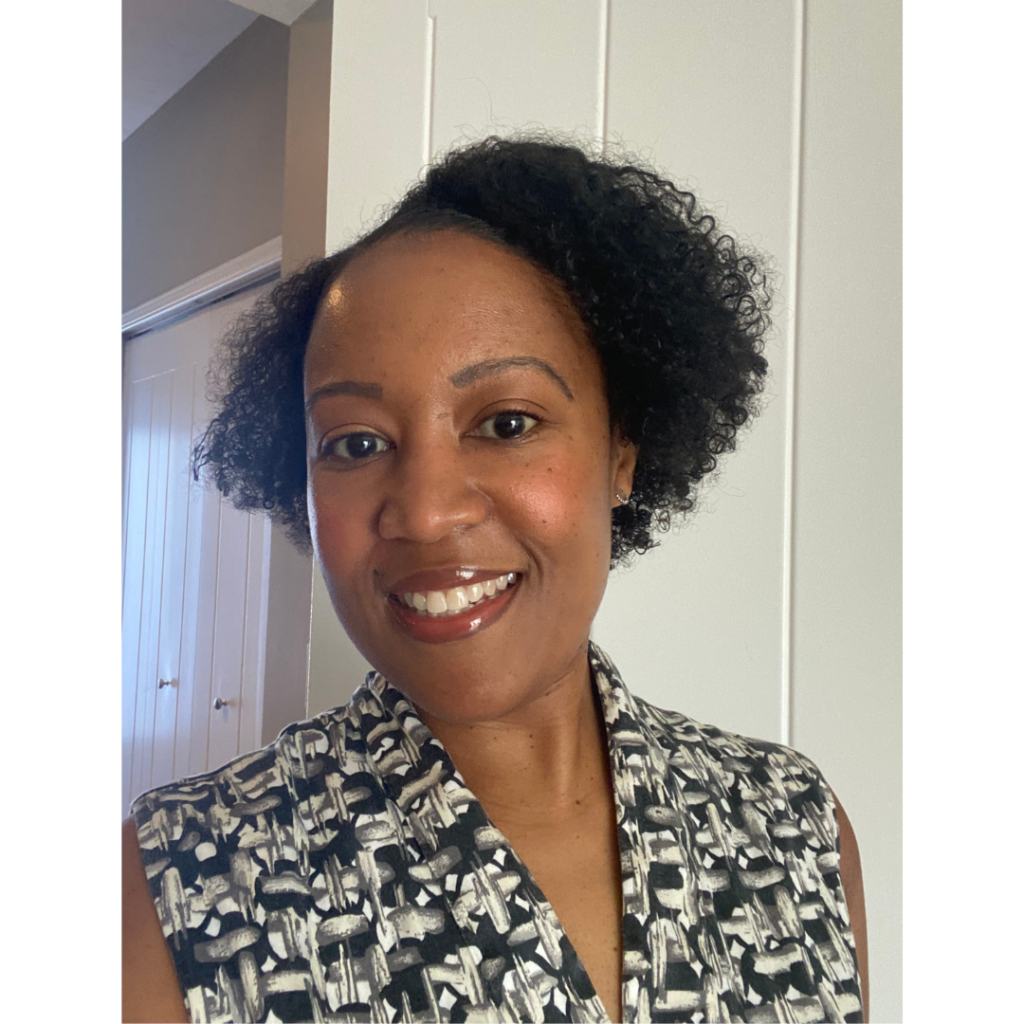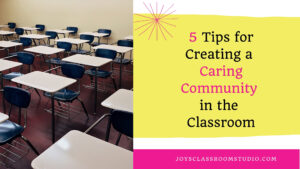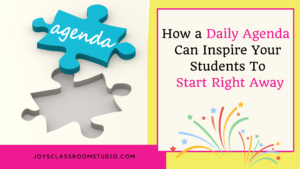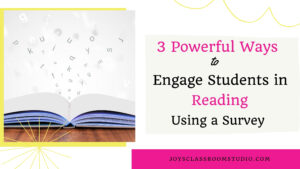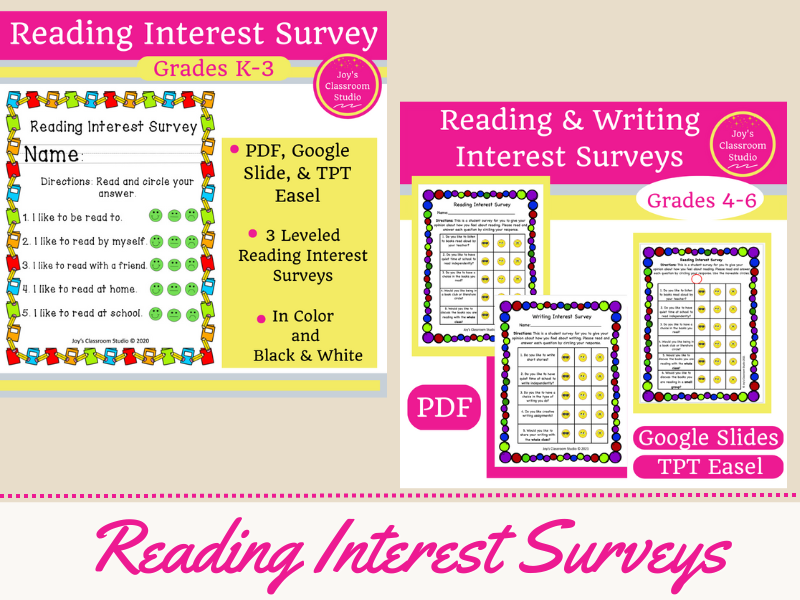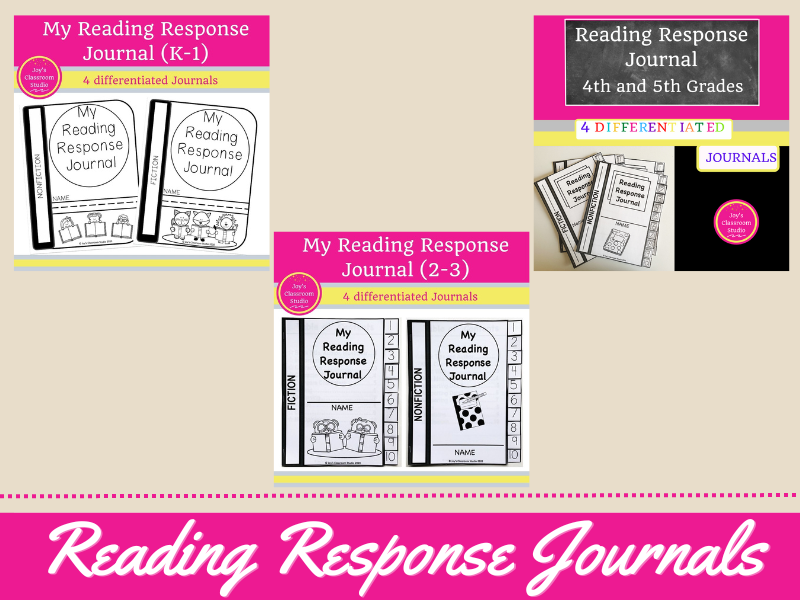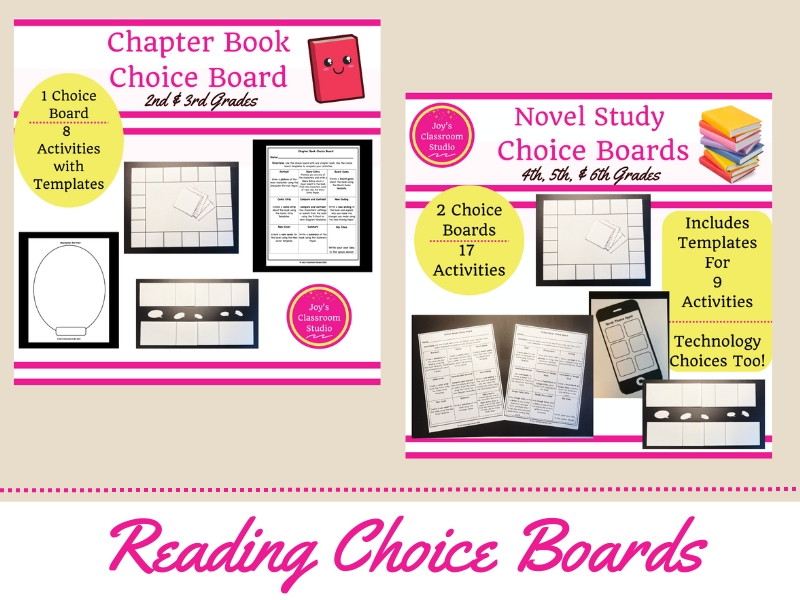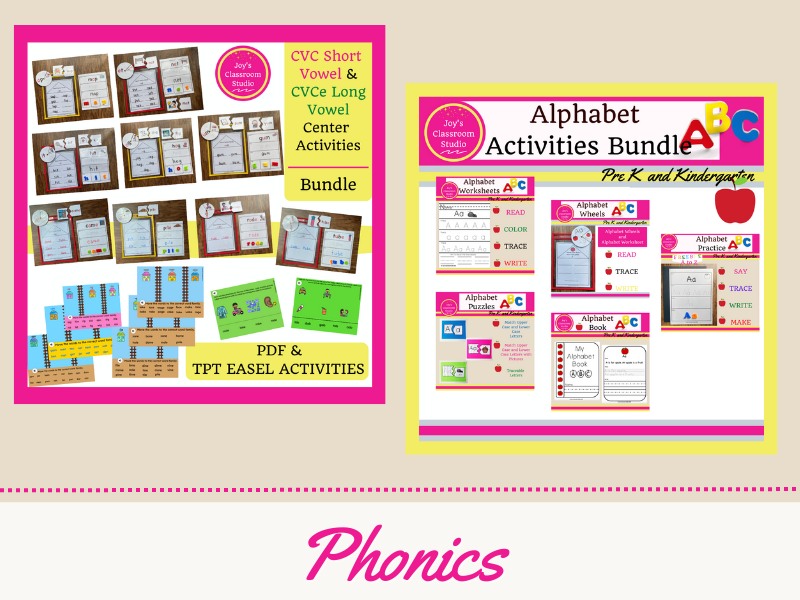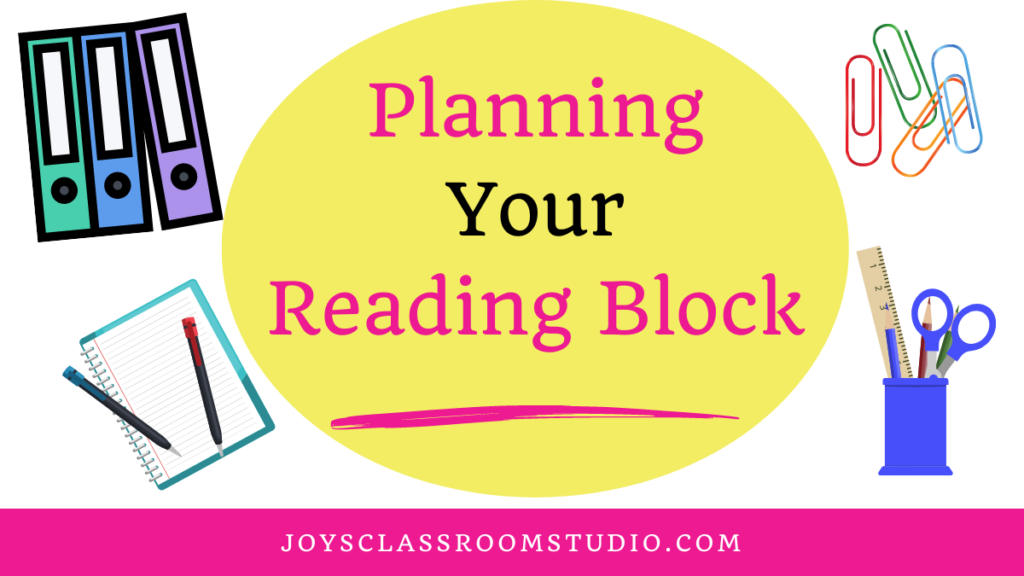
Introduction
When planning your reading block you are working on the actual structure of your reading block. The day-to-day of what you will do and how you will teach. Hopefully, you read my blog post from last week about organizing your reading classroom for back-to-school. If not you can read it here. Whether you just have a designated bulletin board, reading corner, or whole classroom you can find some useful tips.
Take the time to think about the structure of your reading block. Having plans in place for this will help set you up for success. Back-to-school time is a great time to be proactive and think about the school year as a whole. You can do this by planning your reading block. Identify the key standards and components that make up your time in the classroom and make a plan. This will help you stay on track throughout the year!
In this blog post, (1) I will share how to identify what you need to teach. (2) Show how to keep track of what you will teach by creating a syllabus and quarter outlines! (3) And talk about managing student materials.
Identifying What You Need To Teach when Planning Your Reading Block…
No matter how many minutes you have to teach reading, the most important thing is to know what you are supposed to be teaching during those minutes. In my district, we have certain core reading materials we are to use along with district provided supplemental resources. We are also allowed to include materials of our own choosing that go with our state standards.
So step one is to read and look over your state standards, district curriculum guide, and district provided reading materials. This way you are knowledgeable about what you are required to teach. Plus you will see what reading skills and strategies are to be taught for the grade level you are teaching.
When I taught elementary I had an uninterrupted 90 minutes to teach reading. During this time I focused on teaching reading components like phonemic awareness, phonics, vocabulary, fluency, and reading comprehension. I integrated spelling, speaking, and listening skills as well as writing. Although I had a separate time for writing outside of this reading block, reading and writing just naturally flowed together.
During these 90 minutes, I would begin with the whole group. I focused on the read-aloud and mini lessons and then moved into small group guided reading. While I was doing guided reading in a small group the other students would work independently reading and doing activities. Or they would work at a literacy station around the classroom.
Middle school teachers most likely follow a class period that is about 50 minutes long. Currently, I have 3 sections of ELA classes that are about 50 minutes long. During this time I focus on fluency, vocabulary, reading comprehension, language arts concepts, writing, speaking, and listening. Thankfully these concepts complement each other and I can integrate things together as I teach.
This year I am going to work on adding in small groups. I know many teachers at the middle school level don’t really do small groups. However, I miss being able to check in with students during small groups and giving them guidance and feedback on their reading. Stay tuned for upcoming blog posts about teaching small groups in the middle school classroom!
Identifying What You Will Teach When Planning Your Reading Block…
Now that you have an idea of what you will be teaching and have looked through resources. You can bring it all together by organizing what you will teach. I am currently doing this, it’s the beginning of August and I like to organize what I am going to teach for the year.
This helps to give me a road map of what my year will look like. It also helps me to be proactive in getting resources and materials on time for when I need them. Creating a tentative outline allows me to look ahead and think about what is needed for my upcoming lessons.
Here are the steps I take to organize what I will teach during my reading block…
- Look at state standards, district curriculum guide, and district resources.
- Include additional resources or projects I would like to do during the school year. Look back at the previous year or years to see what worked. I also think about field trips. Although I have a great team partner who always remembers to organize and schedule these!
- Think about the actual time I have to teach students. This is important because we all know we only have so much time. So I consider in school time and out of school homework time.
- I make a tentative agenda of how I want things to flow in the classroom on a daily basis. I stick to the same format unless I need to move things around because something is just not working. Having the same format helps give me structure and makes lesson planning easier and more realistic.
During the school year, I make daily agendas on Google Slides. I display them on the Smart Board for students to know what we are doing as they arrive in class. This cuts down on wasted time and helps keep things structured. Read my blog “How a Daily Agenda Can Inspire Your Students to Start Right Away” to learn more about using a Daily Agenda.
Example Agenda Items
- Warm Up: This is something students can do independently so they can start class without me. Just in case someone is asking me a question, the phone rings, etc. I start the year off with the expectation that students are to get to work immediately on the warm-up. This way they aren’t waiting for me to start the show!
- Read Aloud: I like to read aloud to my students every day! Remember it doesn’t have to be a whole book it could be just a few pages, a picture book, or a poem. Read my blog posts “How To Use Picture Books With Upper Elementary Students During Back To School Time” and “More Picture Books To Use With Upper Elementary Students During Back To School Time”… about using chapter books in upper elementary/ middle school classrooms.
- Mini Lesson: The mini lesson is one of the most important elements of the reading block. This is your main lesson for the day. It is where you can take focus concentrated time and teach skills. In my opinion, the mini lesson should not be longer than 20 minutes. Stick to the most important elements. Make sure the students are actively participating in this by having students practice the skills. Some of the things they can do are annotate the text, take notes, read along, or answer questions in writing.
- Small Group, Independent Work, or Whole Class Assessment: Use this time to work with a group or individual student. Have the other students work independently. To help students stay on task. Let them know they must turn in an exit ticket or assignment at the end of class. You could also give an assessment or quiz whole class during this time.
Again this is just an example of what I do. Of course, you will have days when you can’t get in everything and that is ok. You adjust and carry on for the next day. When starting off if this seems like too many things to do you can take some things away. But generally speaking, you want to start off with some sort of warm up, then move into your lesson, and finally end with a way of checking for understanding.
Syllabus
I make a syllabus for my ELA classes. I am actually required to have a syllabus, so I just update it each year to reflect the current year’s teachings. On my syllabus I give parents my work contact information, the course overview, and course materials. I include the quarterly topics/ themes, daily classroom procedures, classroom expectations, positive behavior, and consequences. My syllabus also informs parents of the grading scale, extra credit policy, late work policy, and homework policy.
If you are not required to do a syllabus. You may do something similar on a smaller scale like a back-to-school pamphlet for parents.
Outlines
Now that I have looked at the big picture of the school year, I am ready to make an outline for the whole year. I get my district calendar and go week by week listing out the week, date, and how many days. For example, I list out week 1 and write the dates next to it. So if week 1 was August 7th- 11th. I would write Week 1 8/7-8/11 (5 days). I like to make note of how many school days are in the week because it helps with planning enough material. Read my blog post “7 Back to School Tips for New Teachers” to learn more about it.
Then I look at my quarterly topics and themes and fill in the topics I am teaching week by week. I make a special note if there is a certain project I want to do so I can remember when it is coming up. To take it a step further, for those of you who want one more thing to do!!! I write down what graded assignments, quizzes, and tests will tentatively take place during each quarter. This helps me pace myself.
At the beginning of the year, I only do this in detail for quarter 1. Then at the end of each quarter, I do a detailed list for the upcoming quarter. However, some of the assignments I can write down ahead of time. I generally do argumentative writing 3rd quarter so I know that will be a major 3rd quarter grade.
Managing Student Materials When Planning Your Reading Block
Schools vary in what they have available for students to use to keep their materials in when at school. Some students have lockers, cubbies, or chair pockets. But no matter what you have sometimes it just doesn’t seem like it’s enough for all of their stuff. Or it is enough and you just want to manage it better so students aren’t all over the classroom looking for materials.
I always try and make sure students’ materials are conveniently located next to where they are sitting. This cuts down on students not being able to find their books or notebooks. I label student’s workbooks with their class period and place them in the bin near their table group. The bins are labeled with the class period and table number. For example, period 2 third table would be 2.3.
Here are some ideas for managing student materials that I have used over the years…
Student Chair Pockets
Crates Next to Student Table Groups
Containers Next to Student Table Groups
Mini Bookcases Next to Student Table Groups
Large Dish Pan Tubs
Individual Pencil Cases
Clear Banker Boxes
Conclusion
Planning your reading block will help you set yourself up for success! The goal of doing this is to give you an idea of how your school year can be. Giving yourself a tentative outline helps you to not waste time searching for ways to do things. Having a plan for moving forward with the year helps you to save time.
When planning your reading block during back to school be sure to (1) Identify what you need to teach. (2) Plan what you will teach by creating a syllabus and quarter outlines to help stay on track! (3) And decide on ways to manage student materials.

